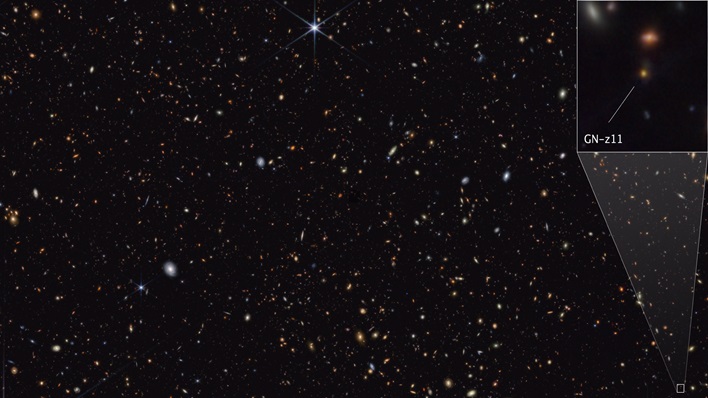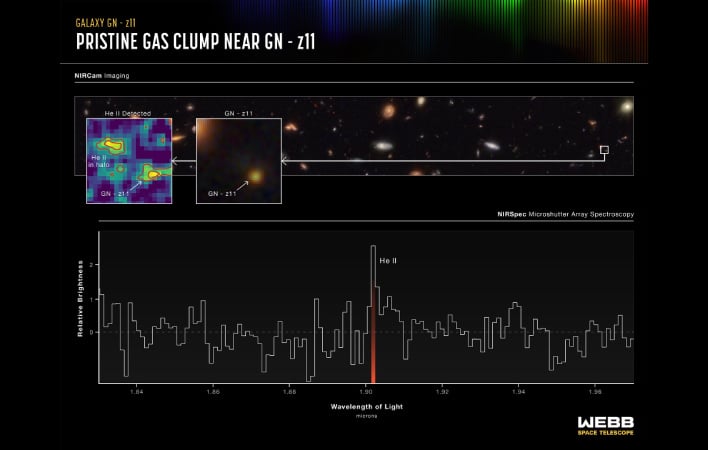Webb Space Telescope Detects Hints Of Our Universe's First Birth Stars

Galaxy GN-z11 was first detected by the Hubble Space Telescope. The distant galaxy is believed to have existed when the universe was only around 430 million years old (yes, that's young in universe terms). Scientists have been befuddled by the brightness of GN-z11, but new evidence collected by Webb may shed new light on the mystery. The newly collected data from JWST has revealed an extremely hungry supermassive black hole at the galaxy’s center, along with what is believed to be some of the first stars to spread light through the early universe.
“We found extremely dense gas that is common in the vicinity of supermassive black holes accreting gas,” explained principal investigator Roberto Maiolino of the Cavendish Laboratory and the Kavli Institute of Cosmology at the University of Cambridge in the United Kingdom. “These were the first clear signatures that GN-z11 is hosting a black hole that is gobbling matter.”
Along with the supermassive black hole, Webb also unveiled what scientists say are purely made of hydrogen and helium. While there has never been any definitive detection of stars of this nature, scientists are hopeful that the evidence for the existence of Population III stars by Webb will provide the answers and proof they have been searching for. Population III stars are anticipated to be extremely large, very bright, and very hot.
“The fact that we don’t see anything else beyond helium suggests that this clump must be fairly pristine,” remarked Maiolino. “This is something that was expected by theory and simulations in the vicinity of particularly massive galaxies from these epochs — that there should be pockets of pristine gas surviving in the halo, and these may collapse and form Population III star clusters.”
With Webb’s new observations, scientists hope to continue answering long held questions as to the universe evolving “from a dark and relatively simple state into the highly structured and complex environment we see today.” Researchers are also hopeful that Webb can reveal more about the case for Population III stars.


